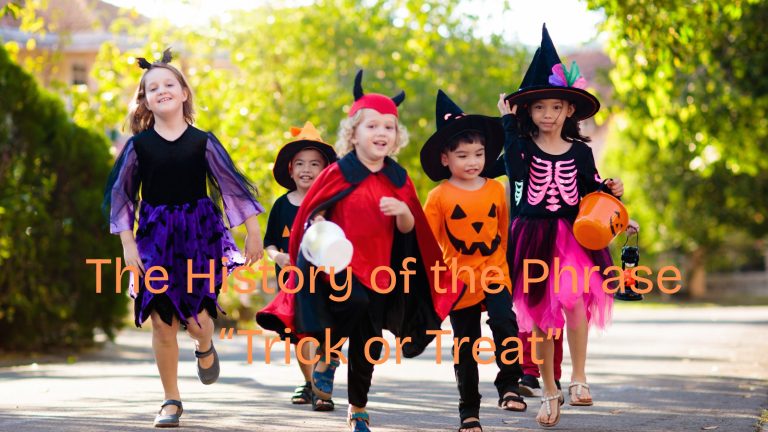
The Fascinating History of the Jack-O’-Lantern: From Celtic Roots to Modern Halloween Icon
The glowing, grinning face of the Halloween-season jack-o’-lantern is so familiar that it’s easy to forget the rich, layered heritage behind it. The story of the Jack‑o’‑lantern stretches back centuries, crossing continents from ancient Celtic festivals to modern American pop culture. In this post we’ll trace the tradition from its earliest roots to today’s carved-pumpkin phenomenon, exploring folklore, migration, adaptation, symbolism and cultural change.
Origins in Celtic lands
The roots of the jack-o’-lantern tradition lie in the ancient festival of Samhain, celebrated by Celtic peoples in what is now Ireland and Scotland. At Samhain (marking roughly Nov 1, the end of the harvest and the onset of “winter”) the boundary between the living and the dead was believed to be thin, and spirits or wandering souls might cross into our world. Encyclopedia Britannica+1 As part of the customs, people made offerings, lit fires, wore costumes, and used lanterns carved from vegetables to provide light and perhaps to ward off malevolent spirits.
In those early years, the “lanterns” were not pumpkins. Pumpkins, as we know them today in the U.S., are native to North America. In Ireland and Britain, hardy root vegetables like turnips, mangel-wurzel and even large beets were used instead. People hollowed them out, carved grotesque or friendly faces, inserted a candle or ember, and placed them in windows or doorways to keep unwanted spirits at bay.
The legend of “Stingy Jack”
Key to understanding the jack-o’-lantern symbol is the Irish folktale of Stingy Jack (also called “Jack of the Lantern”). Though the exact date of its origin is uncertain, the most familiar version was recorded in the 19th century. According to the legend, Jack was a crafty but unsavory character. He tricked the Devil multiple times — asking the Devil to turn into a coin to pay a pub tab, hiding the Devil in a tree until he pledged not to take Jack’s soul, and generally bargaining his way out of misfortune.
When Jack finally died, neither heaven nor hell would take him (because of his trickster nature and broken promises). The Devil sent Jack off into the night with only a burning coal for light, and Jack placed that coal inside a hollowed turnip to carry it. He was doomed to wander the earth forever. The Irish began to call that wandering soul “Jack of the Lantern” — which eventually morphed into “jack-o’-lantern.”
In the folktale, the carved turnip lantern thus takes on a comforting or protective role — the glowing light that bands of villagers might set out to ward off Jack’s roaming spirit or other night creatures. The tradition of carving scary faces into root vegetables aligns with the wider Samhain practice of preparing for the otherworldly.
Migration to North America & the pumpkin transformation
When Irish and Scottish immigrants came to North America (especially during the mid-19th century Irish Famine), they brought their customs, including harvest-time lantern carving traditions. But in the New World they found a very different harvest: pumpkins. These native squashes were larger, softer, easier to hollow out and carve than turnips.
Thus, the European practice of carving root vegetables evolved into the American icon of carving pumpkins. According to the encyclopedia entry, the term “jack-o’-lantern” was recorded in American English by the 1830s (applied to carved pumpkins), and by the late 1800s, pumpkins had become tied to Halloween and harvest celebrations.
An article confirms that pumpkins came to dominate the tradition: “In the United States and Canada, the carved pumpkin” began as a general harvest-symbol, before becoming explicitly tied to Halloween.
Symbolism and cultural role
What does the jack-o’-lantern symbolize? Over time it has been many things:
- A protective device: In Celtic tradition, carved lanterns warded off evil spirits or Jack-style wanderers.
- A communal marker: In America, lit jack-o’-lanterns outside homes signal welcome (or holiday spookiness) and participate in neighborhood traditions of trick-or-treating and decorations.
- A transformation of harvest to celebration: The pumpkin as canvas speaks to autumn abundance, creativity and playful fright.
- A connection to death and other worlds: Because of its Samhain roots and the legend of Jack, the jack-o’-lantern carries themes of liminality (between living/dead, seasons, harvest/winter).
Evolution and popular culture
By the late 19th and early 20th centuries, the pumpkin jack-o’-lantern had become firmly entrenched as a Halloween symbol in America. A Canadian newspaper in 1886 reported a Halloween party with “a great sacrifice of pumpkins” used to make lit lanterns.
Pumpkin carving also entered American culture as a social activity — contests, parades, festivals. For example, the town of Keene, New Hampshire once held the world record for most lit jack-o’-lanterns at a display.
Meanwhile the term “jack-o’-lantern” itself had earlier meanings: in Britain in the 17th century it was used to describe ignis fatuus (marsh lights) or a night watchman with a lantern. These older usages likely fed into the folklore (Jack wandering with a lantern in dark marshes, etc.).
Regional variations and vegetable alternatives
While turnips were predominant in Ireland and Scotland, other root vegetables such as mangel-wurzel or potatoes may have been used. (In England’s West Country, the tradition of Punkie Night involved carving “punkies” from mangel-wurzel or large roots.
Once the custom migrated to North America, pumpkins became dominant not only for ease but also for symbolism of the harvest and their orange hue fitting autumn décor.
How the tradition spread and adapted
As Halloween developed as a cultural celebration in the United States, the jack-o’-lantern became one of its iconic markers. Halloween parties, trick-or-treating, home decorations, pumpkin carving kits and themed stencils all emerged in the 20th century. Today, carving, lighting and proudly displaying jack-o’-lanterns is a ritual for many families.
As folk customs merge with commercial culture, the jack-o’-lantern serves many functions: a family craft, a photo subject, a competition piece, a décor item, a symbol of autumn. At the same time, the history remains embedded: a root-carving tradition from Celtic lands, a legend of a trickster doomed to wander, and the immigrant experience of adapting to a new land while preserving meaningful rituals.
Contemporary meanings and reflections
While most people today carve jack-o’-lanterns for fun rather than spiritual protection, the underlying themes remain ripe for reflection. The act of carving a face into a vegetable, lighting it from within, and placing it in the dark evokes ideas of light vs dark, the cycle of seasons, transformation and even a bit of the uncanny.
For small businesses or retailers (including your own shop!), the jack-o’-lantern offers potent visual symbolism. It speaks of autumn, harvest, creativity, DIY craft, spooky fun and community. The deeper history — that this tradition comes from turning harvested vegetables into lanterns to ward off spirits and honour the threshold between seasons — adds richness and authenticity for storytelling and marketing.
Practical take-aways
- The next time you display or carve a jack-o’-lantern, you’re participating in a tradition that reaches back to pagan harvest rituals and Irish folklore of roaming souls.
- In marketing or decoration, you might emphasize: heritage, craft, creativity, light in darkness, seasonal transformation.
- For gift or décor items (for example in your gift shop), consider partnering jack-o’-lantern imagery with product lines — pumpkin-shaped mugs, turnip-root vegetable imagery, historic legend print designs. The story behind the icon can elevate the product beyond mere decoration.
- Carving from any vegetable continues the tradition: while pumpkins are mainstream, the historical turnips remind us that resourcefulness and local produce were key. Maybe a unique “heritage root vegetable lantern” design could be a niche item.
Conclusion
From the windswept marshes of Ireland to modern suburban sidewalks, the jack-o’-lantern has traveled a fascinating journey. It began with celery-like root vegetables carved to keep wandering spirits at bay. It carried the name of Stingy Jack, who tricked the Devil and wandered eternally. It changed form when immigrants encountered the pumpkin in America. And eventually it became an emblem of Halloween, harvest, community and creative light in darkness.
So next time you scoop out a pumpkin, carve in a smiling or scary face and light a candle inside, remember: you’re connecting with pilgrims of the harvest, storytellers across centuries, and a symbol that lights up the threshold between seasons and worlds.



